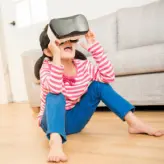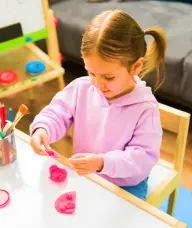

Unlocking the Senses: Clever Sensory Strategies to Help Your Child Thrive at Home


Sensory integration is essential in a child’s development as it helps them better interpret the world around them, process information more effectively, and interact socially. Parents need to be aware of activities that can help their children engage with sensory input on a regular basis. Here are 10 do-it-yourself sensory strategies and activities every parent should know about for their child:
1. Use scented play dough – Have your child make shapes out of variously flavored and scented play doughs to engage their olfactory senses.
2. Plan a treasure hunt – Hide objects around the house, giving clues along the way to help your child find each item.
3. Design a sensory garden – Planting flowers, herbs, and plants gives children the opportunity to engage all their senses in one activity.
4. Create an obstacle course – Use items from around the house to create an obstacle course that engages both gross motor skills and tactile processing.
5. Use bubble wrap for tactile input – Provide your child with bubble wrap and allow them to explore the different textures and pops of each bubble.
6. Create a sensory bin – Fill a box or bin with safe items such as sand, water beads, rice, beans, feathers, or foam pieces and let your child explore the various textures.
7. Practice yoga poses – Have your child practice yoga poses to work on their gross motor skills with tactile input.
8. Use a light box or dark box – Create an environment that helps your child explore light and dark through touch and sight.
9. Play music for auditory stimulation – Play different types of music to help your child explore different sounds and rhythms.
10. Make a sensory bottle – Use various objects, such as glitter or sequins, to create visually stimulating bottles that your child can shake and watch.
These activities are easy to do at home and provide children with much needed sensory processing opportunities. By incorporating these do-it-yourself activities into your child’s day, you can help them become better regulated and more successful in their daily lives.
For more information on sensory strategies and activities for children, seek advice from a professional occupational therapist or psychologist. They will be able to provide personalized guidance tailored to the specific needs of your child.
This article is intended for informational purposes only and should not be used as a substitute for medical or professional advice. If your child is experiencing symptoms that concern you, please contact a licensed healthcare practitioner.
Written by Michelle Silva, OTR/L
